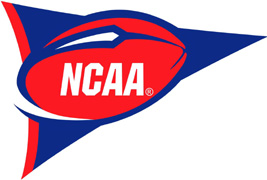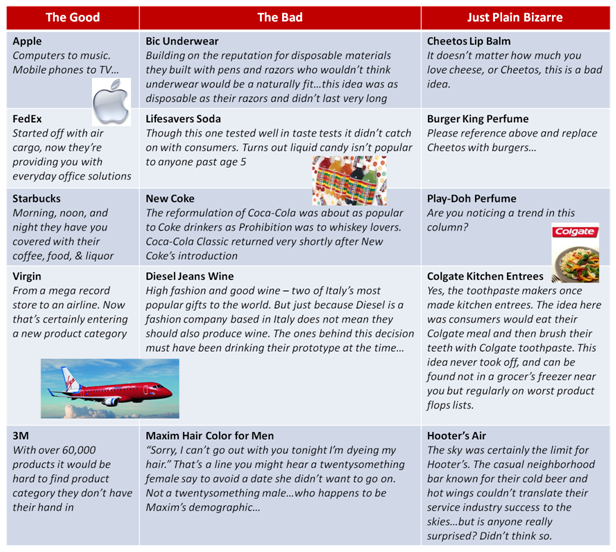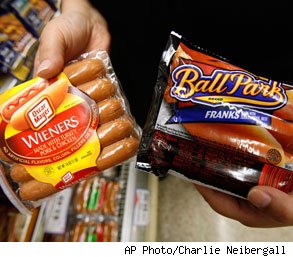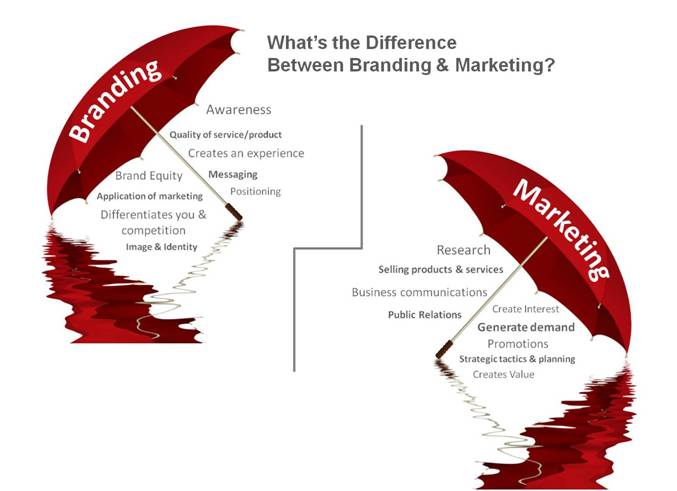Brand Revivals: Bringing the Past Back to the Present
Remember the Razr flip phone of the early to mid-2000's? Of course you do, because you either had one or looked on with jealousy at all your friends that had one, wishing you too could one day be as cool as them. But then came June 29, 2007, the first iPhone became available to the world, and the decline of the mighty Razr began.
In an attempt to gain the status the Razr once enjoyed Motorola announced this week that they will be reviving the brand with their new Android powered mobile device. When the Razr debuted in 2004 it quickly became the best-selling mobile device (pre-iPhone) and was one of the first devices to make a cell phone more than a necessity but a status symbol and desired accessory. When Motorola decided to revive the Razr brand with its new phone, it can be assumed they are hoping to tap into brand equity that the Razr brand once held in the marketplace.
So, with that let's take a look at why a company might want to revive a brand.
First of all, brands need reviving after they've suffered some sort loss in the market and that more than likely occurs due to two factors:
1.Reduced Functional Benefits: When customers are making a purchasing decision they look for the product that is going to meet their needs, and while a product may meet those needs at one time or another as the customer matures and grows so do their needs.
2.Increased Competition: In the world we live in change happens quickly, and we are constantly bombarded with the "latest and greatest" must-have product, and this is particularly true in the technology industry. With all these product introductions brands are being constantly challenged to stay relevant and appeal to consumers.
Why you would revive a particular brand:
1. Emotional ties: even if a successful brand started to lose steam in the market for whatever reason, there is more than likely a certain emotional tie with that brand from its heyday. After all it wouldn’t have been a success in the first place if there hadn’t been any emotional connection. Brand/Product Managers may want to capitalize on consumer's sense of nostalgia to help the new product enjoy the success of its predecessor.
2. Reduces Risk/Cost: brand revivals can be a valuable and cost-effective because there is the idea that an already known brand has a given head-start over a completely new brand, and so less needs to be spent on its introduction.
3. Brand Equity: if leveraged in the right way, and the brand equity of the original product is strong enough a new product can build on the equity the original possessed to carry itself through the product launch and beyond
What is Brand Awareness?
For any brand or product to survive and succeed they must earn a level of brand awareness that is greater than or at least equal to their competition.
But what exactly is brand awareness and how does a product or brand generate this level recognition?
Brand Awareness (n.): a measure of how readily members of a target audience remember a commercial brand, what it is about, and their level of trust in the brand. The proportion of target customers that recall a brand. (source: dictionary.com)
Determining brand awareness is a primary goal of marketing or advertising departments as it is a reliable indicator and measuring stick for the success of their strategies and tactics.
And there are three primary levels of awareness that can be used to measure marketing and advertising success:
1. Aided Awareness: Recognition of a specific brand or product from a list of possible
names offered as a prompt.
2. Unaided Awareness: Recognition of a specific brand or product without being
prompted with possible names.
3. Top of Mind: Highest level of awareness, the brand dominates the mind and pops up
first whenever applicable
For obvious reason awareness has a high correlation to purchasing habits; if a company creates an awesome product but no one has ever heard of it no one will buy it. Let's face it humans are creatures of habit and rarely stray far from the path when making purchasing decisions. We like what we know. But gaining a high level of awareness is more than throwing your brand's name in everyone's face, you must also back up the awesome logo, flashy packaging, and advertising with a quality product or the awareness you've built as a brand will only last so long.
While there are many ways to increase exposure and awareness some of the most tried and true tactics include:
• Publicity via brand related stories/articles
• Direct marketing
• A strong web presence (both in search engines and social media)
• Word of mouth marketing
• Strong presence at tradeshows and industry events (particularly for B2B sales)
• Consistent brand message throughout all touch points
Everything I Need to Know About Branding I Learned from College Football

Remember the adage everything I need to know I learned in kindergarten? Well let's think about this in terms of branding; that sentence could easily translate to everything I need to know about branding I learned from college football.
As I've written about in a number of past posts creating a memorable brand experience and creating a strong brand loyalty are the hallmarks of a successful brand, and nowhere will you find a company or product that creates the undying passion and loyalty the way college football teams do.
Point-in-case: When I originally started to write a post tying branding and college football together I was going to list the top ten college football brands (admittedly determined by my own biased ranking system) but quickly decided this was a bad idea based on a number of things.
- Problem #1: The thought of ranking my favorite team (Go Gators!) at anything other than #1 made my skin crawl.
Problem #2: SEC schools would undoubtedly take over the top five (heck the entire top ten would probably be SEC schools in my mind) because in addition to being a Florida fan I'm an SEC fan.
Problem #3: Last but certainly not least, I knew that if I started ranking college teams a debate so heated would break out in the office that I feared our walls would come crashing down like goal posts of yesteryear.
So how do college football teams garner such strong brand experiences and loyalty? It's because when it comes to branding, college football gets it. There is a painstaking attention to detail associated with a college football brand from making sure the correct Pantone color is used for every piece of equipment, apparel and brochure to guarantee consistency to nostalgic activities that create positive brand associations. These nostalgic activities can include a school's unique tailgating traditions and pre-game ceremonies. Every detail is considered, and everything is branded.
But why would a school spend so much time, energy, and money to create these branded experiences? It's simple. A school with a strong brand will continue to attract masses of new students each year (subsequently growing its brand's reach every year), students then graduate, become alumni and alumni become donors to the school. Finally there is the revenue and brand impressions generated from trademark licensing. Schools like the University of Texas, University of Florida, University of Michigan, University of North Carolina, etc. generate millions of dollars each year from licensing revenue alone. The number of impressions brands like these get each year from the sale of licensed apparel and equipment only furthers the awareness and loyalty for brands.
Having a strong brand in college football is more than winning games because even in recent slumps of some the greatest brands in college football their fans have remained true and passionate. It's all about the experience and the passion the fans feel for their brand…I mean team.
So repeat after me: everything I need to know about branding I learned from college football.
Is Co-Branding a Risk to Your Brand?
Betty Crocker's brownies mix + Hershey's Chocolate Syrup; Dell Computers + Intel Processors; Kraft Lunchables + Oscar Meyer meat, Nike + Michael Jordan.
These aren’t just tasty treats, fancy computers, or the latest pair of sneakers. These are all examples of successful co-branding efforts, which is a branding strategy that aligns two separate brands with one product.
There are many advantages to a co-branding a product, as well as a few risks. But what successful business venture doesn’t come with risks? Here are a few things to consider when deciding if co-branding is right for you:
Advantages of co-branding:
1. A powerful way to introduce one brand's loyalists to the other
2. Cost Effective: A great example of this would be brands like Dunkin Donuts & Baskin Robbins who
typically share the same building, the same staff, even the same registers and counter space. Not only
are the saving money by joining their real estate but because the traffic for these two brands don’t
generally coincide it guarantees steady foot traffic throughout the day.
3. Shared product development & marketing
4. They say two heads are better than one? Well, same goes for brands. If there are two brand names
associated with a product the buzz around it will surely be much louder than if one brand was going at
a new product launch alone.
Disadvantages of co-branding:
1. Co-branding can dilute a product because the positive experience a consumer has with the product is
now spread across two brands whereas normally one brand can claim all the glory
2. Similarly, if there is a negative experience with the product that negativity is now associated with two
brands and the damage is not limited to one company.
3. No one can deny that one brand is going to be seen as secondary or weak compared to the other…but
will it be your brand? Or the other?
The Good, The Bad & The Bizarre of Brand Extensions
Once upon a time Coca-Cola had only soft drinks, Burger King only had burgers, and Nokia had rubber boots…
Yes, you read that correctly. The same Nokia that has been a telecommunications company and long time mobile phone manufacturer started out as an industrial conglomerate that produced galoshes and other rubber products.
Other than having strong and highly recognizable names these companies along with many others have tried their hand at extending their brand beyond their individual flagship products. Brand extensions are a complex venture and run the chance of being either highly successful or horribly awful.
Unlike product extensions which are the use of a brand's name for a new item in the same product category, a brand extension is a strategy deployed when a company uses their brand name and attaches it to a new product in a different product category from the original established product. Much like Starbucks did when they introduced their liquor line in addition to their signature coffee.
Attaching a brand name to a new product category allows marketers to capitalize on the brand equity of the original brand and attach it to something new in hopes that consumers will associate the same experience and knowledge they have of the brand to the new product. But attaching a brand name to a new product is not always easy, it can be costly for both the brand extension and original brand because a poor choice for brand extensions may dilute and deteriorate the core brand and damage its brand equity.
When a brand extension is successful it can prove to be a lucrative move for brands, and in some instances like Nokia the brand extension becomes more successful than the original venture. But sometimes brand extensions are just flat out weird. So, which are which? Take a look at the graph below and see some brand extensions I've laid out as the good, the bad, and the bizarre.

Brandverbs: The Highest Mark of Success?
When was the last time you said: "I'm going to go use a search engine to look up information on tonight's event." The answer to that is either never, or sometime circa the early 2000's, but since then it's more than likely that most Americans say "I'm going to go Google more information on tonight's event." And that is my friend is brandverbing.
Companies like Xerox, Hoover, and even Google have gone to great lengths to avoid their brands becoming verbs, but why? When a brand becomes a verb you know that it has reached mass market consumer recognition, so wouldn’t becoming so engrained in society that your brand becomes part of the language be the ultimate degree of success for a brand?
So while others have fought hard to keep their brand from becoming a verb others are spending a lot of time and resources to make sure their brand is used as verbs by consumers in everyday life and conversation. Enter: Vanguard; an investment company who in 2010 began a highly visible campaign to turn their brand name into a verb.
The move by Vanguard shows that they too recognize the significance and potential payoff for their brand to be used in everyday language just like Xerox or Google has now experienced. And unlike a brand becoming genericized like asprin, zipper, and escalator (yup, these were all trademarked brand names at one point) a brand that becomes a verb is more appealing than its generic counterpart and has less risk in losing its brand appeal. Seth Godin, American author and speaker, said: "people care much more about verbs than nouns. They care about things that move, that are happening, that change. They care about experiences and events and the way things make us feel. Nouns just sit there, inanimate lumps. Verbs are about wants and desires and wishes."
So if what Godin says is true, every brand should strive to be a brandverb when appropriate. After all a brand is more than a product or logo, a brand is about an experience and the expectations we have of that brand. So if becoming a brandverb will incite those feelings then what's the big deal? These days I believe becoming a brandverb is not a kiss of death but the mark of success.
Nice Package: 5 Tips for a Great Package Design

As "the hot dog wars" battle on between Sara Lee Corporation and Kraft Food Inc. in a Chicago courtroom over misleading package designs, I think it's time to take a deeper look into packaging and why it is important enough for these two companies to battle it out in court.
While a brand must employ a successful strategy throughout many different touch points including advertising, identity, and web presence, it is packaging that could most directly have an impact on a brand's sale. No longer is a product's package merely a means of protection during transport from point A to point B, but an increasingly important factor in product's success. A well-marked package will get a customer to pick up a product and take a closer look, which ultimately puts you one step closer to making that sale. This is why it is so important to have an interesting and compelling package design.
Kristin Everidge, Manager of Visual Branding at Addison Whitney, says "People are drawn to products with interesting packages because it suggests that what's inside is equally appealing or different." Package design can enhance a brand through unique structures, sustainable materials, cross promoting other products and building brand awareness through shelf displays and planograms that wow consumers during their weekly shopping trips.
Packaging is a vehicle that reflects the product's brand and image. To ignore the importance of packaging in today's market is your own product's death. Package design should be a continuous investment to evolve with the ever changing world that is packaging.
But what makes a great design? I asked Kristin and these are her top five elements of a great package design (in no particular order):
- 1. Shelf Presence/ability to grab attention quickly
2. Effective informational hierarchy
3. Inspiring materials and structure
4. Functionality
5. Clean & crisp design (images, typography, and functional information)
So do you think you're immune to the power of package design? I think the real answer would surprise you, next time you're shopping the aisles of your local Target, take note of the products you grab and how compelling their designs are compared to the products you left behind…
Is Product Placement Still Effective?

More and more frequently when I go see a movie I feel as if I'm watching a two hour long commercial rather than the cinematic depiction of a bachelor party in Vegas. And frankly, I'm becoming a little jaded by the continuous product placement or "brand integration" as it's called now. I then started to realize I was seeing the same products in many of the movies I went to see. That in turn has made the impact of seeing my favorite actor/actress drinking my favorite soda while driving a brand new car less meaningful. Rather than believing this character would actually chose to buy those things it has made me believe that the brand just made a better offer to the production company and won out.
Product placement became popular in the 1980's and has continued to grow in popularity ever since. One of the earliest examples of product placement involves the movie E.T. and Reese's Pieces, (I know you remember the scene) so what used to be a non-traditional form of advertising is very much now the norm and doesn’t seem to be going away anytime soon. In 2010 $5.6 billion was spent on product placement, and that's more than double what was spent in 2005. One of the biggest drawls to advertisers to use product placement is the hope that consumers will develop a stronger emotional connection with the product, and the ability to target a specific group through relevant content.
But what brands are shown most often? Here are the 10 brands with the most appearances in a top film (topped the box office at least once) since 2001:
1. Ford – 152 times
2. Apple – 124 times
3. Coca-Cola – 99 times
4. Chevrolet – 86 times
5. Mercedes – 81 times
6. Budweiser -78 times
7. Sony – 72 times
8. Pepsi – 70 times
9. Nike – 67 times
10. Cadillac – 59 times
Source: brandchannel.com
To check out the rest of the list visit here, and take note of how the top product placement companies has and has not changed throughout the past 10 years. Most interesting to me is the rise of Apple on the list, and the stronghold Ford has on the top spot over the years.
Why INN's are so Important to a Drug's Life
Every pharmaceutical asset begins with a nonproprietary, generic name, or an International Nonproprietary Name (INN). This name could potentially be the first strategic decision you make for the commercial life of your brand.
But what exactly is an INN name and why do they exist?
Since the inception of the INN naming system in 1950 it has been providing health professionals with a way to uniquely and universally identify each pharmaceutical substance. INN's are not only important in identifying a drug's pharmaceutical ingredients but in providing safe prescription and dispensing of medicines to patients, and communication between health professionals worldwide. The World Health Organization (who manages & issues INN's) issues INN's in English, Latin, French, Russian, and Spanish, and more recently Arabic and Chinese versions are also being issued.
Here Vince Budd, Senior Vice President at Addison Whitney, speaks of the importance INN's have on the success and lifecycle of a drug:
"Although INN’s aren’t actually considered intellectual property, developing an INN is without a doubt a strategic endeavor that many commercial, medical and regulatory officers take very seriously. First, the commercial team of an organization sees this as the first opportunity to put some sort of face or image to the asset. Although WHO would like manufactures to use trivial or fantasy letter strings when building generic names around INN stems, many approved INN’s are actually quite suggestive about the product. This helps some of the branding activities that soon follow. Also, many manufacturers must think about the life cycle of the asset and potential generic competition, which also impacts the type of INN name that is sought. The bottom line is INN development is serious business and the wrong or right name can certainly have an impact on the future success of a drug. "
According to WHO there are roughly 8,000 INN's listed today, and that number grows by approximately 120-150 each year. Every INN must be submitted to and approved by WHO, and must follow their general principles for developing INN's.
Source: World Health Organization


